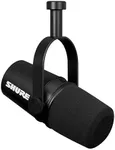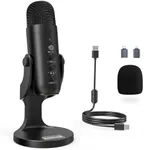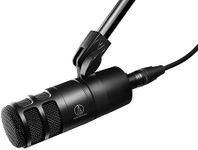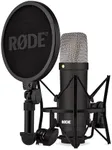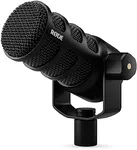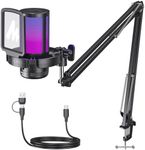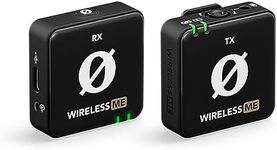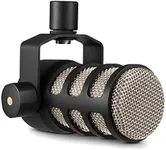Buying Guide for the Best Podcast Microphone
Choosing the right podcast microphone is essential for achieving clear, professional-sounding audio. The right microphone can make your voice sound natural and engaging, while the wrong one can introduce noise or make you sound distant. When shopping for a podcast microphone, it's important to consider how and where you'll be recording, as well as your experience level. Understanding the key specifications will help you find a microphone that matches your needs and helps you create the best possible content.Microphone Type (Dynamic vs. Condenser)Microphone type refers to the technology used to capture sound. Dynamic microphones are generally more rugged and less sensitive, making them great for recording in less controlled environments or when background noise is a concern. Condenser microphones are more sensitive and capture a wider range of frequencies, which can make your voice sound richer and more detailed, but they also pick up more background noise. If you record in a quiet, treated space, a condenser might be best. If you record in a noisy or untreated room, a dynamic microphone is often a better choice.
Polar PatternThe polar pattern describes how a microphone picks up sound from different directions. The most common patterns for podcasting are cardioid (which picks up sound mainly from the front), omnidirectional (from all directions), and bidirectional (from the front and back). Cardioid is usually best for solo podcasting because it focuses on your voice and reduces background noise. Omnidirectional can be useful for group discussions around a table, while bidirectional is good for face-to-face interviews. Choose the pattern that matches your recording setup and the number of people speaking.
Connectivity (USB vs. XLR)Connectivity refers to how the microphone connects to your recording device. USB microphones plug directly into your computer and are easy to use, making them ideal for beginners or those who want a simple setup. XLR microphones require an audio interface or mixer but offer more flexibility and higher audio quality, which is preferred by professionals. If you want plug-and-play convenience, go for USB. If you plan to upgrade your setup or need more control over your sound, consider XLR.
Frequency ResponseFrequency response is the range of sound frequencies a microphone can capture, usually measured in hertz (Hz). A wider frequency response means the microphone can pick up both low and high sounds, which can make your voice sound fuller and more natural. For podcasting, look for a microphone with a frequency response that covers the typical vocal range (about 80 Hz to 15 kHz). If you have a deep voice, you might want a microphone that captures lower frequencies well.
Built-in Features (Headphone Jack, Mute Button, Gain Control)Some microphones come with built-in features like a headphone jack for real-time monitoring, a mute button for quickly silencing the mic, or gain control for adjusting the input level. These features can make recording easier and help you avoid common mistakes, like recording too quietly or picking up unwanted noise. If you value convenience and want to monitor your sound as you record, look for these features.
Size and Mounting OptionsThe size and mounting options of a microphone affect how easy it is to position and use. Some microphones are compact and can sit on your desk, while others require a boom arm or stand. Consider your recording space and whether you need a microphone that's easy to move or one that stays in a fixed position. If you travel or record in different locations, a smaller, portable microphone might be best. If you have a dedicated studio, a larger microphone with a sturdy mount could be ideal.

